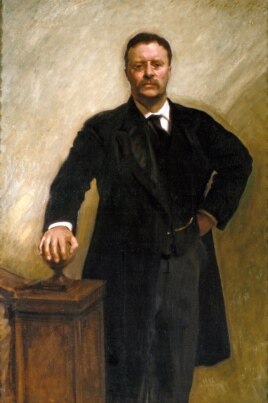Researchers have built a cellphone that does not need batteries. They say the phone can send and receive calls using power from radio signals or light.
研究人员开发出了一种无需电池的手机。他们称这种电话可以使用从无线电信号或光线中获取的电能来实现接打电话。
A team from the University of Washington in Seattle is currently testing a prototype of the phone.
西雅图市华盛顿大学的一个团队目前正在测试这种手机的原型机。
The researchers were able to develop a device that uses much less power than any cellphones used today. This design allows the new phone to run on very small amounts of electricity.
研究人员开发出了一种耗电远低于目前任何手机的装置。这种设计使得这种新手机能够以极小的电量运行。
Team member Vamsi Talla says the phone picks up small electrical signals known as radio frequency, or RF waves.
该团队成员Vamsi Talla表示,这种手机能接收所谓的射频波。
"Ambient RF waves are all around us. So, as an example, your FM station broadcasts radio waves, your AM stations do that, your TV stations, your cellphone towers. They all are transmitting RF waves."
他说:“周边环境的射频波无处不在。例如,FM电台会发出无线电波,AM电台、电视台和手机信号塔也一样,他们都会发出射频波。”
The phone can also convert ambient light into electrical current for power, according to the researchers.
研究人员表示,这种手机还能将环境光线转化为电能。
Shyam Gollakota is a professor in the Paul G. Allen School of Computer Science and Engineering. He says the invention demonstrates great progress in new cellphone technology.
Shyam Gollakota是(华盛顿大学)保罗·艾伦计算机科学与工程学院的教授。他说,这项新发明让新型手机技术取得了很大进步。
"This battery-free phone is a major leap in terms of the capabilities of battery-free devices. Because now we have a streaming device that can continuously talk as well as receive data, which is basically a phone."
他说:“这种无需电池的手机是无电池设备在性能方面的一次重大飞跃。因为我们现在开发出了这种可以持续通话和接收数据的流媒体设备,这基本上就是一种电话。”
The phone identifies speech going into the microphone and coming out of the speaker. These speech vibrations are then converted into radio signals by a device called a base station.
该手机能识别出进入麦克风的语音并从扬声器中播放出来。这些语音震动然后被一种称之为基站的设备转换为无线电信号。
The prototype has been able to operate on power gathered from radio signals from a base station up to nine meters away, according to the researchers. Using power from ambient light, it has communicated with a base station up to 15 meters away.
研究人员称,该原型机能够从9米外的基站发出的无线电信号中的收集电能来运行。该手机还使用来自环境光线的电能同15米外的基站进行了通信。
The team says the base station operating model could eventually be widely used by putting the technology in existing cellphone towers and Wi-Fi systems.
该团队表示,这种基站运行模式最终可以通过将这种技术集成到现有的手机信号塔和Wi-Fi系统中得到广泛应用。
The researchers demonstrated the phone in a test with the calling service Skype. During the test, the device received an incoming call, made an outgoing call and was able to put callers on hold.
研究人员在一次Skype呼叫测试中展示了这种手机。在测试中,这种设备实现了接、打电话并且能够保持呼叫等待。
The prototype has limited capabilities because it is not a finished product. For example, users now have to use headphones to hear calls and must also press a button to change between talking and listening. And currently, it can only be used for making calls.
这种原型机的性能有限,因为它不是成品。例如,使用者现在必须使用耳机来接听电话,还必须按住一个按钮才能在听和说之间切换。而且目前它只能用于拨打电话。
However, the team plans to develop new prototypes that could handle texting, photos and internet use. They are also working on a version that could use a small solar cell to provide power.
然而该团队计划开发出可以发短信、照片和上网的新原型机。他们还致力于开发出使用小型太阳能电池提供电能的版本。
Vamsi Talla says he thinks the technology might be able to greatly change the capabilities of all phones.This includes solving one of the biggest problems for all users - dead batteries.
Vamsi Talla表示,他认为这项技术也许可以极大地改变所有手机的性能,包括解决所有用户面临的最大问题:电量耗尽。
"In the future every smartphone will come with a battery-free mode where you can at least make a voice call when your battery's dead."
他说:“未来每部智能手机都将配备无电池模式,这样电池没电时至少也能拨打语音电话。”
The researchers are hoping to complete a finished product within about nine months.
研究人员希望在9个月内做出成品。
I'm Bryan Lynn.
我是布莱恩·林恩。(51VOA.COM对本文翻译保留全部权利,未经授权请勿转载,违者必究!)
By Bryan Lynn20 August, 2017
Researchers have built a cellphone that does not need batteries. They say the phone can send and receive calls using power from radio signals or light.
A team from the University of Washington in Seattle is currently testing a prototype of the phone.
The researchers were able to develop a device that uses much less power than any cellphones used today. This design allows the new phone to run on very small amounts of electricity.
Team member Vamsi Talla says the phone picks up small electrical signals known as radio frequency, or RF waves.
"Ambient RF waves are all around us. So, as an example, your FM station broadcasts radio waves, your AM stations do that, your TV stations, your cellphone towers. They all are transmitting RF waves."
The phone can also convert ambient light into electrical current for power, according to the researchers.
Shyam Gollakota is a professor in the Paul G. Allen School of Computer Science and Engineering. He says the invention demonstrates great progress in new cellphone technology.
"This battery-free phone is a major leap in terms of the capabilities of battery-free devices. Because now we have a streaming device that can continuously talk as well as receive data, which is basically a phone."
The phone identifies speech going into the microphone and coming out of the speaker. These speech vibrations are then converted into radio signals by a device called a base station.
 Research team from the UW Department of Electrical Engineering and the Allen School of Computer Science & Engineering (left to right): Vamsi Talla, Wu Meiling, Sam Crow, Joshua Smith, Bryce Kellogg and Shyam Gollakota. (Mark Stone/UW)
Research team from the UW Department of Electrical Engineering and the Allen School of Computer Science & Engineering (left to right): Vamsi Talla, Wu Meiling, Sam Crow, Joshua Smith, Bryce Kellogg and Shyam Gollakota. (Mark Stone/UW)The prototype has been able to operate on power gathered from radio signals from a base station up to nine meters away, according to the researchers. Using power from ambient light, it has communicated with a base station up to 15 meters away.
The team says the base station operating model could eventually be widely used by putting the technology in existing cellphone towers and Wi-Fi systems.
The researchers demonstrated the phone in a test with the calling service Skype. During the test, the device received an incoming call, made an outgoing call and was able to put callers on hold.
The prototype has limited capabilities because it is not a finished product. For example, users now have to use headphones to hear calls and must also press a button to change between talking and listening. And currently, it can only be used for making calls.
However, the team plans to develop new prototypes that could handle texting, photos and internet use. They are also working on a version that could use a small solar cell to provide power.
Vamsi Talla says he thinks the technology might be able to greatly change the capabilities of all phones.This includes solving one of the biggest problems for all users - dead batteries.
"In the future every smartphone will come with a battery-free mode where you can at least make a voice call when your battery's dead."
The researchers are hoping to complete a finished product within about nine months.
I'm Bryan Lynn.
Bryan Lynn wrote this story for VOA Learning English based on reports from Reuters and the University of Washington. Hai Do was the editor.
We want to hear from you. Would you pay more for a phone that does not need a battery? Write to us in the Comments section, and visit 51VOA.COM.
_____
Words in This Story
prototype – n. original or first model of something from which others are developed or made
ambient – adj. existing in the surrounding area
convert – v. change from one thing into another
leap – n. sudden change or improvement in something
microphone – n. device people speak into that records sounds
vibration – n. continuous shaking movement
button – n. small part of a machine or device that is pushed to make it work
solar – adj. of or related to the sun














